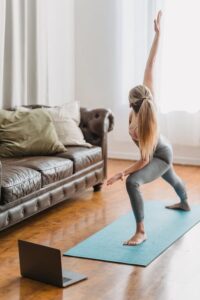How to Create a Relaxing Bedtime Routine for Better Sleep

A relaxing bedtime routine is a powerful way to signal your body that it’s time to wind down and prepare for restful sleep. In today’s busy world, many people struggle with falling asleep or staying asleep through the night. Establishing a calming sequence of activities before bed can improve your sleep quality, reduce stress, and support overall well-being.
In this post, we’ll explore why a bedtime routine matters, how to create one that suits your lifestyle, and practical tips to help you stick with it.
Why a Bedtime Routine Matters
Our bodies follow a natural circadian rhythm—an internal clock that regulates sleep and wake cycles. However, daily stress, screen use, and irregular habits can disrupt this rhythm. A consistent bedtime routine helps:
– Signal your brain and body to relax
– Lower stress hormones
– Promote the release of melatonin, the sleep hormone
– Improve sleep onset and duration
– Enhance mental and physical recovery
If you struggle with racing thoughts or difficulty falling asleep, a routine can provide structure and a sense of calm that eases these challenges.
Steps to Create Your Relaxing Bedtime Routine
1. Set a Consistent Bedtime and Wake Time
Aim to go to bed and wake up at the same time every day, even on weekends. Consistency strengthens your circadian rhythm and improves sleep quality.
2. Wind Down an Hour Before Bed
Dedicate the last 30–60 minutes before sleep to calming activities. Avoid stimulating tasks such as working, intense exercise, or heated discussions.
3. Limit Screen Time
The blue light from phones, tablets, and laptops can interfere with melatonin production. Try to turn off screens at least 30 minutes before bed. You might also use “night mode” or blue light filters if needed.
4. Create a Comfortable Environment
Make your bedroom inviting and sleep-friendly. Consider factors like:
– A cool, comfortable temperature (around 65°F or 18°C)
– Soft, breathable bedding
– Minimal noise or use of white noise machines
– Dim lighting or use of lamps instead of overhead lights
5. Incorporate Relaxing Activities
Find simple, enjoyable activities that help your mind and body relax. Some popular options include:
– Reading a book: Choose calming or light material; avoid intense thrillers.
– Listening to soft music or nature sounds: Gentle melodies or ambient sounds can soothe.
– Practicing mindfulness or meditation: Focus on your breath or try guided meditation apps.
– Gentle stretching or yoga: Helps release physical tension.
– Taking a warm bath or shower: The drop in body temperature afterward can promote sleepiness.
6. Avoid Heavy Meals, Caffeine, and Alcohol Late
Eating large meals or drinking caffeine and alcohol close to bedtime can disrupt sleep patterns. Try to finish eating and limit these substances at least 2–3 hours before bed.
7. Keep a Sleep Journal (Optional)
If you want to track your progress or identify sleep disruptors, keep a simple journal. Note what activities you do at night and how well you sleep. Over time, you can tweak your routine for better results.
Sample Relaxing Bedtime Routine
Here’s an example routine that you can modify:
– 8:30 PM: Finish dinner and turn off electronic devices
– 9:00 PM: Take a warm shower or bath
– 9:20 PM: Practice gentle yoga or stretching
– 9:35 PM: Read a book or listen to soft music
– 9:50 PM: Write in a gratitude or sleep journal
– 10:00 PM: Lights out and practice deep breathing or meditation until sleep comes
Tips for Success
– Be patient: It can take 2–3 weeks for your body to adjust.
– Be flexible: Life happens—adjust your routine if needed but try to keep the core relaxing elements.
– Limit naps: Excessive daytime napping can interfere with nighttime sleep.
– Avoid clock-watching: If you can’t sleep, focus on relaxation rather than stress about falling asleep.
When to Seek Professional Help
If you consistently struggle with sleep despite a good bedtime routine, consider consulting a healthcare professional. Persistent insomnia or other sleep disorders may require specialized treatment.
Final Thoughts
Creating a relaxing bedtime routine is a simple yet effective way to improve your sleep and support your overall health. Start with small changes and build a nightly ritual that feels good for you. Over time, your mind and body will thank you with deeper, more restful sleep.
Sweet dreams!




